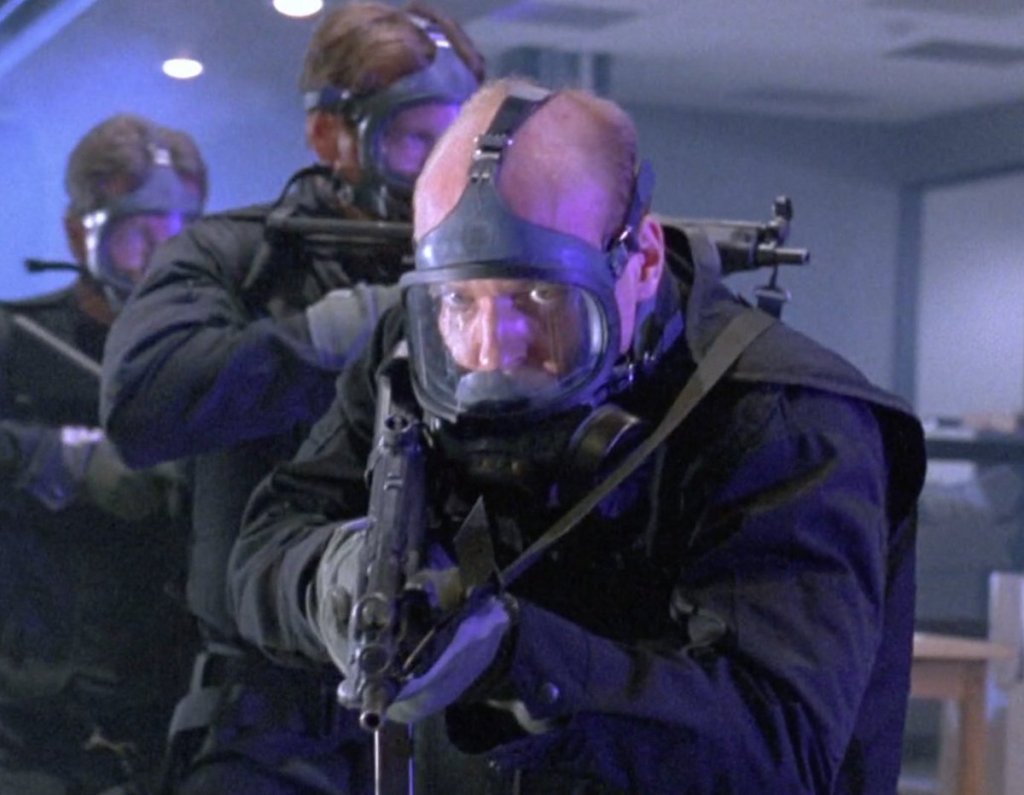The MSA Phalanx
The MSA Phalanx is a really strange mask. There exists a pretty solid demand for these, despite the lack of filters. For quite a long time, the only people I knew collecting these generally were film heads (especially Terminator fans), although that number has slowly increased with some availability of adapters.

The MSA Phalanx likely finds its origins in the MSA Ultravue. Both share the same face-piece, general structure, de-fogging vents, and exhaust valve. The Ultravue was originally introduced as a mining respirator circa 1976. These early masks did not display the pronounced cheek pockets that the Phalanx would later have, although the same general body is the same.

I personally suspect that at some point in the late 80’s or early 90’s, the injection molds on these masks wore out, and warranted an update. Thus a new design was created that fit all of the specifications, as well as create a new mask. From this, the MSA Ultratwin was born alongside an updated MSA Ultravue. Note how the cheek pockets have been enlarged, with mounting points added for filters on the Ultratwin (left).


This is when DEF TEC stepped in. For those of you not familiar, Defense Technologies is the leading producer of riot control gear. Ever seen a can of CS shot into a crowd, or a Flash Bang thrown into a house? That crowd compliance technology™ was likely produced by none other than DEF TEC. They aren’t just one of the producers either. DEF TEC sports deepstate-adrenocrone-illuminati levels of connections to police stations, giving them a near stranglehold over the industry.

There isn’t exactly much information on what happened to cause DEF TEC to get involved with MSA. Did MSA approach DEF TEC? Did DEF TEC see the product and make an offer to MSA? Whatever happened, one thing is clear. MSA began producing Phalanx’s with the DEF TEC logo stamped into the rubber at OEM time. DEF TEC would then turn around, and sell these gas masks to police stations. Slowly but surely, the Phalanx would make a stealthy entry into American police stations. While it never became the symbol of anonymous riot suppression that the Millennium would grow up to be, it still found itself embedded into the American unconscious, appearing on screen in movies such as Terminator 2.

The MSA Phalanx differs from its industrial counterparts in quite a few ways. There are two variants of the mask “kit” that mirror the Ultratwin and Ultravue ancestry, the “Alpha” and “Beta” kit. I have yet to see a good example of the Beta kit, and it is presumably an exact match to the MSA Ultravue. The Alpha kit is what we would normally consider an MSA Phalanx.


The biggest difference between the MSA Phalanx and Ultratwin seems to be the way it accepts filters. While the Ultratwin has two large flared pieces to accept North style filters, the Phalanx has a small 7/8 14” connector. Unlike most other gas masks, the male connector sits on the mask itself, with the filter screwing in using the respirator rubber as a gasket.

Many components of the Phalanx are borrowed from different masks. For example, the voice diaphragm stamping appears to be a direct clone of the MCU 2/P or M17 style talk plate.

There also appears to have been minor yet notable accessory support for these masks. A rather confusing LE catalog from 2004 states that “[t]he facepiece adapts to optional ESP Communications System” (since this is the latest catalog I can find with the Phalanx listed, it also indicates that 2004 was the last year MSA marketed this respirator).


There also appears to be a whole set of tinted lenses for the gas masks. However, I have never seen an example of an MSA Phalanx bearing one, so they may never have even been ordered.

The MSA Phalanx in reality is a case of history repeating itself. In the 1920-30’s MSA produced the Burrell Type GB. Lake Erie Chemical Company, a large supplier of CS gas and other riot agents (just like DefTec), would purchase the masks en masse, sometimes even replacing MSA’s stickers with their own.

I think that MSA learned their marketing lesson back in the 30’s; and when a new market presented itself for the Ultratwin, they jumped at it. A strong partnership with DefTec meant that these masks appeared at a lot of police stations throughout the 90’s, particularly in New York. While this mask isn’t my go to for CBRN protection (my trusty Millennium is never going to leave my side for that), it is certainly an interesting piece of history that would be absolutely effective in a riot or maybe even industrial setting.
Note: I messed up and had to re-write this article. Thank you to the filthy r*dditors who assisted me in fixing this. You know who you are.
Back to The Kommando Blog




